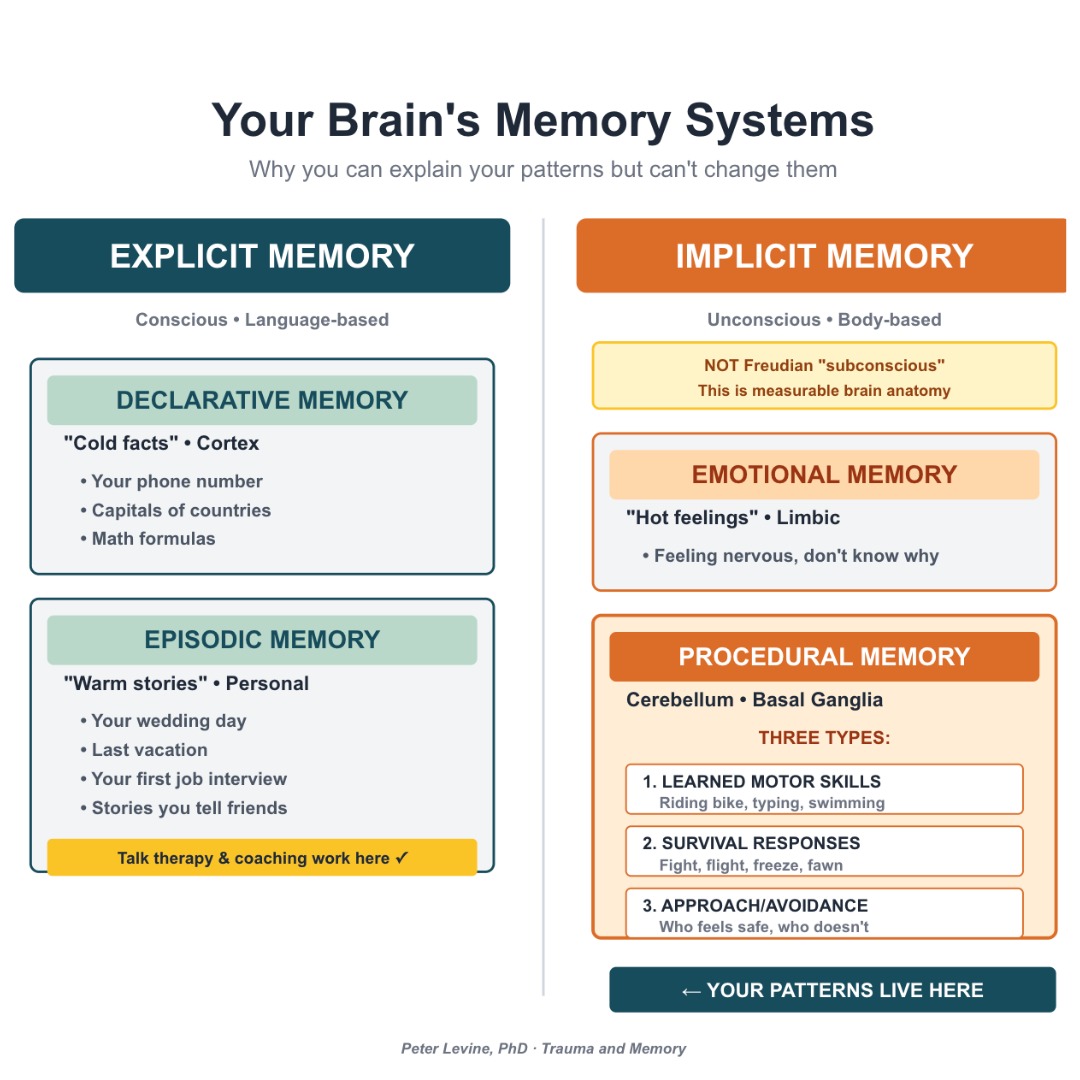Your brain has two completely different memory systems. This distinction changes everything.

Explicit Memory
(What Therapy Works With)
- Memories you can talk about
- Stories you can tell
- Patterns you can name
- Accessible through language
Procedural Memory
(Where Your Patterns Live)
- Body-based patterns
- Automatic reactions
- Encoded before language
- Cannot be talked away
Therapy worked with your explicit memory. That's why you understand everything but can't change anything.
Your patterns live in procedural memory - the cerebellum, basal ganglia, motor systems. These operate completely outside conscious awareness.
You can't talk your way out of procedural memory.
